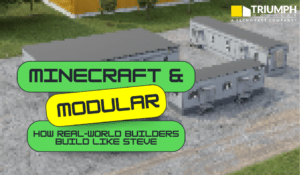“People will forget what you said, people will forget what you did, but people will never forget how you made them feel.”
Maya Angelou, author and American civil rights activist.
Maya Angelou’s words are meaningful to me personally and professionally. They perfectly illustrate why Triumph’s sixth and final guardrail, the “closeout,” is so important: at the close of a project, everyone should feel great without exception.
Triumph’s “closeout” guardrail says that we will use a closeout form (the G704), agreed upon prior to the contract starting, that details everything needed to finish the project.
When the “closeout” guardrail is missing from a project, it opens up the risk that a project will end on a sour note. Too often in our industry, I’ve seen projects end with:
- owners withholding payment
- frustrated contractors claiming they don’t know the difference between a punch list and a warranty
- neither party agreeing on the definition of “substantial completion.”
Here are some of the leading causes of dispute that drain good feelings at the end of a project:
- issues surrounding the start of the warranty
- the warranty itself
- the operations and maintenance manual
- owners beneficial use
- the contractor’s final payment
The good news is that of all the issues I am presenting in this blog series, the problems associated with the closeout may be the easiest to remedy. Triumph has chosen a specific path and it has helped us greatly: Form G704 from the American Institute of Architects (AIA).
Form G704 sets forth a formal process for closeout, which is even-handed and effective. For a sample G704 form, please click here.
As with many forms, the effectiveness and adoption rate of the G704 depends on the shared knowledge of the stakeholders. Therefore, it’s important to explain how the form works at the outset of the project. In Triumph’s case, we cover the closeout process and G704 form in our kickoff meetings with owners.
Key terms to clearly define in this discussion are:
- “substantial completion”
- “the punch list”
- “warranty items”
These are sister concepts, but their differences are vital to understanding at the beginning of the project to ensure a friendly and smooth closing. The G704 form itself is logical and helpful in completing this task, and the process shouldn’t take more than ten or fifteen minutes.
Here is an example process for the closeout:
The contractor proffers the G704 to the owner when they believe that the project is substantially complete. A good faith verbal agreement should proceed with this along with the item placed on a meeting agenda by the contractor.
The parties should agree that the contractor will not start the punch list work until the G704 is fully executed.
The punch list should be defined as work that both parties agree is not conforming to contract specifications. This typically includes minor, incomplete/incorrect work and incidental damage to finishes.
Because this may sound like an unfavorable term for the owner, it needs to be explained: why would the builder start a punch list if the owner has not agreed to the line between substantially complete and punch items?
Lastly, all parties should agree for liability purposes that in no case will anyone take occupancy of the newly built premises until the G704 is signed. The owner’s final acceptance starts when the warranty and general liability shift from the builder’s risk policy to the owner. Clarity on this matter is essential for everyone.
In conclusion, if you are not using AIA contract documents for closeout, you might want to consider using them or something similar. It is not easy to talk about these issues at the outset of a construction project when relationships are just being formed, but a formal process to define what the end looks like, will ensure that people have pleasant thoughts and warm feelings about the project for years to come.




